12 Classic Trees Native to New Mexico - AZ Animals
More Great Content:
The geography of New Mexico consists primarily of desert areas such as the Chihuahua Desert in the south and high mountain ranges, including the Rocky Mountains to its north. The topography includes deserts, rugged mountains, and grasslands ranging from 4,500 feet above sea level to 13,000 feet in elevation at Wheeler Peak, which is part of the Sangre de Cristo mountain range. Much of this mountainous terrain has been carved out by rivers over millions of years, resulting in deep canyons with steep walls, such as Carlsbad Caverns National Park, which includes some 79 caves discovered so far.
New Mexico is an interesting state where the hot desert climate meets with cool forests. This unique combination creates a diverse array of native trees throughout the state. Despite being in a desert, there are plenty of native trees to explore if you know where to look! Broad areas of trees can be seen along rocky slopes and drainage areas at lower elevations. Hikes at higher elevations will reveal mountain ranges abundant with native trees. Exploring these majestic tree-filled landscapes provides visitors with a truly unforgettable experience!
1. Engelman Spruce (Picea engelmannii)
Engleman spruce is a species of evergreen coniferous tree native to the mountain ranges of New Mexico. It grows 82-131 feet tall, with a trunk diameter reaching four feet wide. The needles are short and bluish-green in color, while the bark is reddish-brown and scaly in texture. Engelman spruce prefers cooler temperatures and higher elevations than most other trees and is most common in the Rocky Mountains, with sparser populations in Arizona and New Mexico.
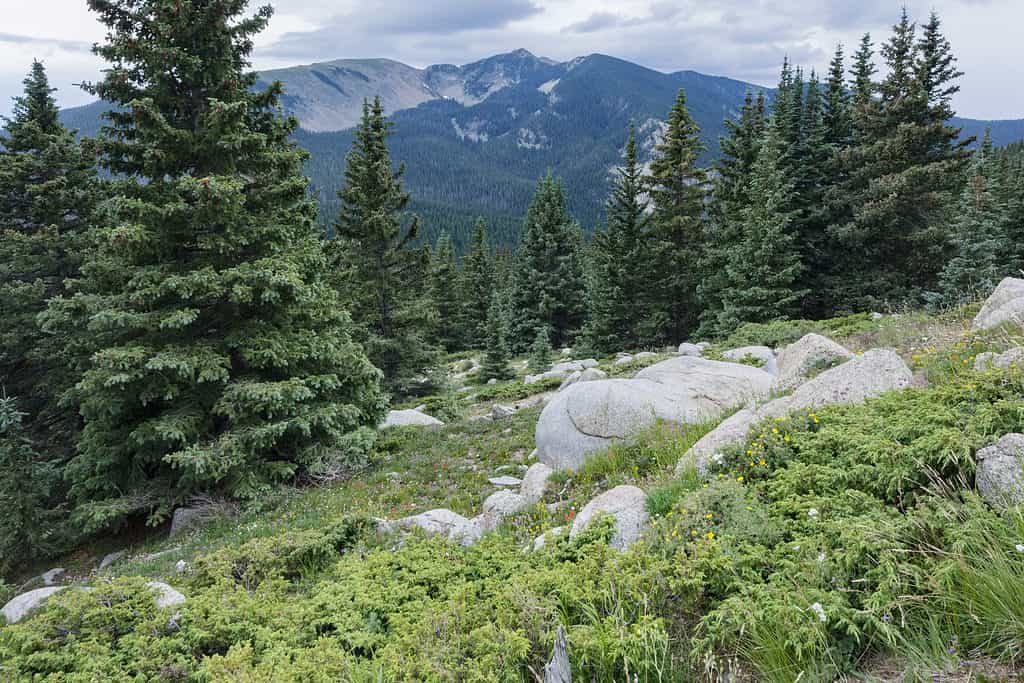
© – License
2. Gamble Oak (Quercus gambelii)
Gamble oak is a deciduous tree native to New Mexico and other western states of the United States. Its leaves are usually two to five inches long, with deeply lobed margins that have a wavy pattern. It has small yellowish-green flowers arranged in catkins, and its acorns mature in one season. This species tends to grow on dry hillsides or rocky ridges.
Gamble oak is an important food source for many wildlife, such as deer, scrub jays, magpies, grouse, chipmunks, and squirrels. In addition to providing food for animals, this tree is a food source for the Colorado hairstreak butterfly. Even black bears like to snack on their tasty acorns!
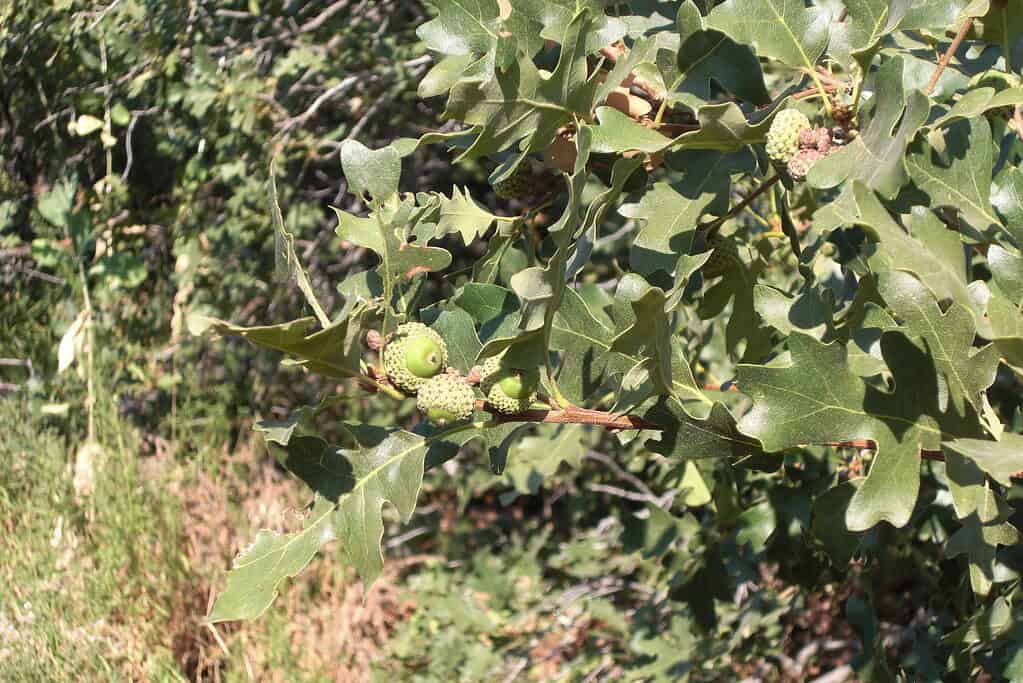
©Andrey Zharkikh / Flickr – License
3. Pinyon Pine (Pinus edulis)
Pinyon pine is a medium-sized conifer native to New Mexico and other parts of the southwestern United States. Pinyon pine is an important source of food for birds, squirrels, and other animals in the area. It can grow from 20 to 30 feet tall with a pyramidal or spreading shape. The bark of this tree is scaly and gray or reddish-brown, while its needles are yellow-green. Its cones have thick scales containing edible seeds, which can be harvested when they turn dark brown or black.
This species of pine tree produces edible nuts called pinyon pine nuts, making it a great snack for both humans and animals. The dense foliage provides shelter for birds and small mammals like squirrels, chipmunks, rabbits, and other rodents. Additionally, mule deer, birds, rodents, and bears love to eat the seeds. As such, you can find this beautiful coniferous tree dotting the landscape throughout New Mexico's mountainous regions.
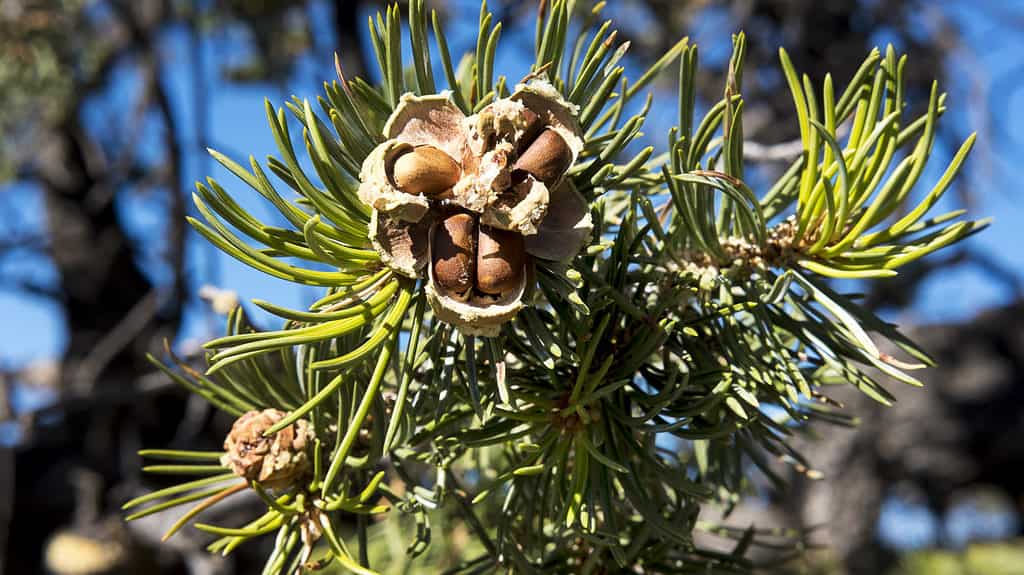
©iStock.com/Ana Iacob
4. Ponderosa Pine (Pinus ponderosa brachyptera)
Ponderosa pine is a pine tree species native to New Mexico and other western parts of the United States. The type most commonly seen in New Mexico is called a yellow pine. It is an evergreen conifer that can reach 80 feet tall. Its bark is orange-brown, with deep furrows running vertically along its trunk. This subspecies has three needles per fascicle.
This tree provides important habitat for many local wildlife species in New Mexico, including wild turkeys, deer, elk, black bears, gray foxes, and more. Ponderosa pines provide much-needed shelter from predators and food in the form of their edible seeds (pine nuts). Additionally, these trees are an essential part of the local watersheds providing shade and helping to prevent soil erosion during storms or heavy rains.
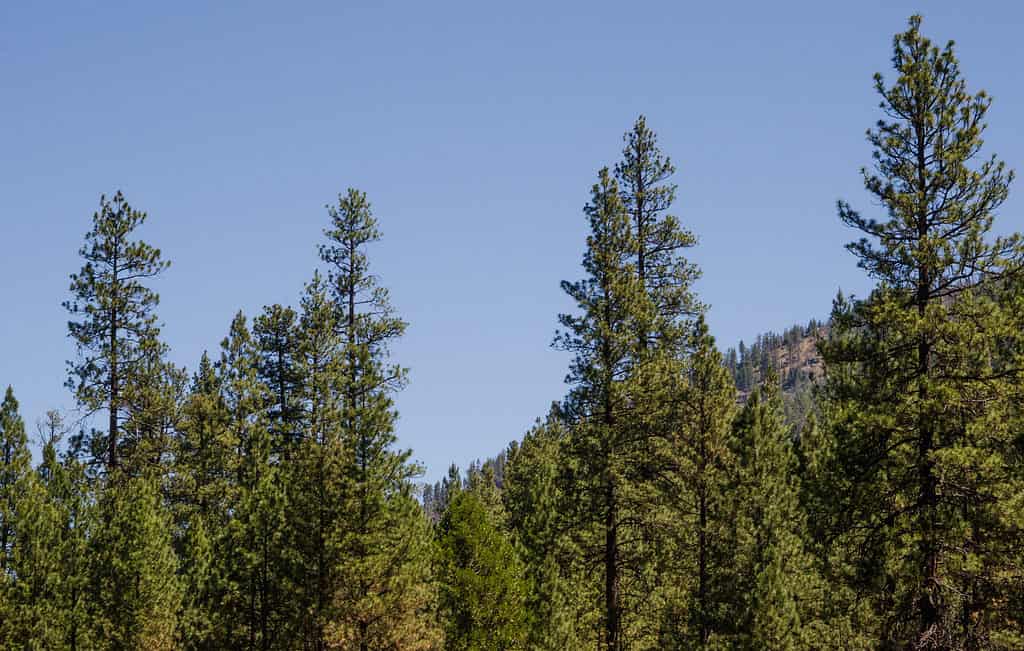
©iStock.com/Rex_Wholster
5. Rocky Mountain Juniper (Juniperus scopulorum)
The Rocky Mountain juniper is a common tree found in New Mexico. It is a type of coniferous evergreen tree with foliage that ranges from light to dark green, depending on the season and age. Its branches are short and grow in a spreading pattern. The tree reaches an average height of 16-40 feet.
They prefer dry climates such as those found in the southwest United States and thrive best when planted in well-drained soil. These trees provide food for wildlife, including birds, deer, rabbits, squirrels, and chipmunks, making them an important part of any natural ecosystem!
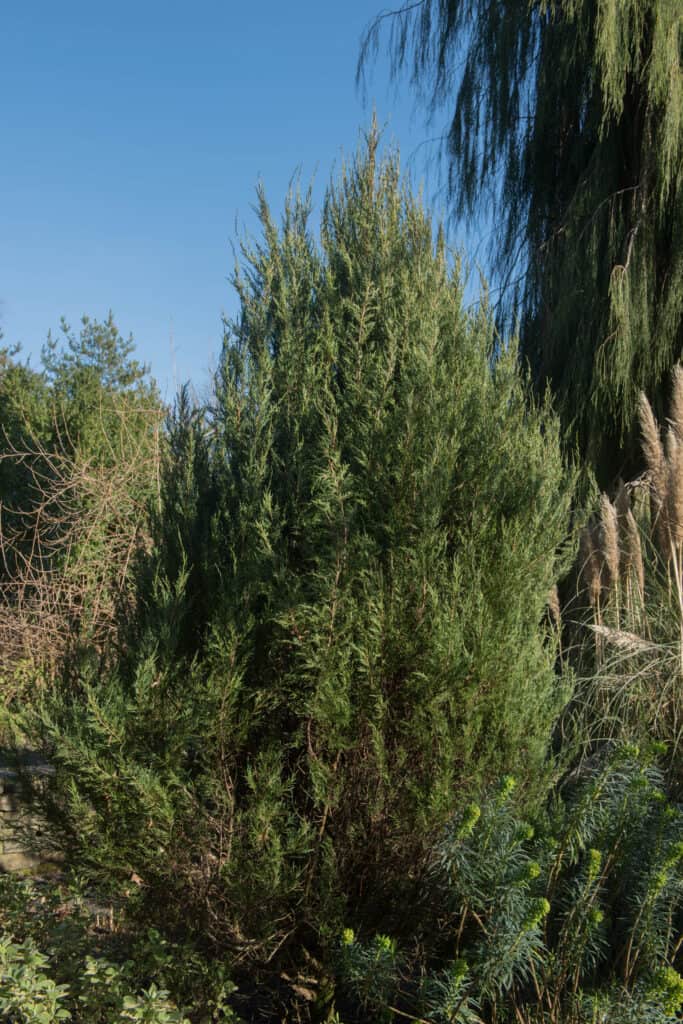
©iStock.com/pcturner71
6. Bigtooth Maple (Acer grandidentatum)
The bigtooth maple is a deciduous tree native to northern New Mexico and other parts of the Western United States. It grows in rocky areas, often in limestone soils. Its bark is thin and grayish-brown with ridges that form diamond shapes when viewed closely. Its leaves are light green in color and turn gold and red in the autumn.
In the springtime, it produces clusters of yellow flowers followed by edible fruits containing two seeds each. The wood of this tree is hard and strong enough for use as lumber or firewood, while its foliage provides wildlife food during the winter months.
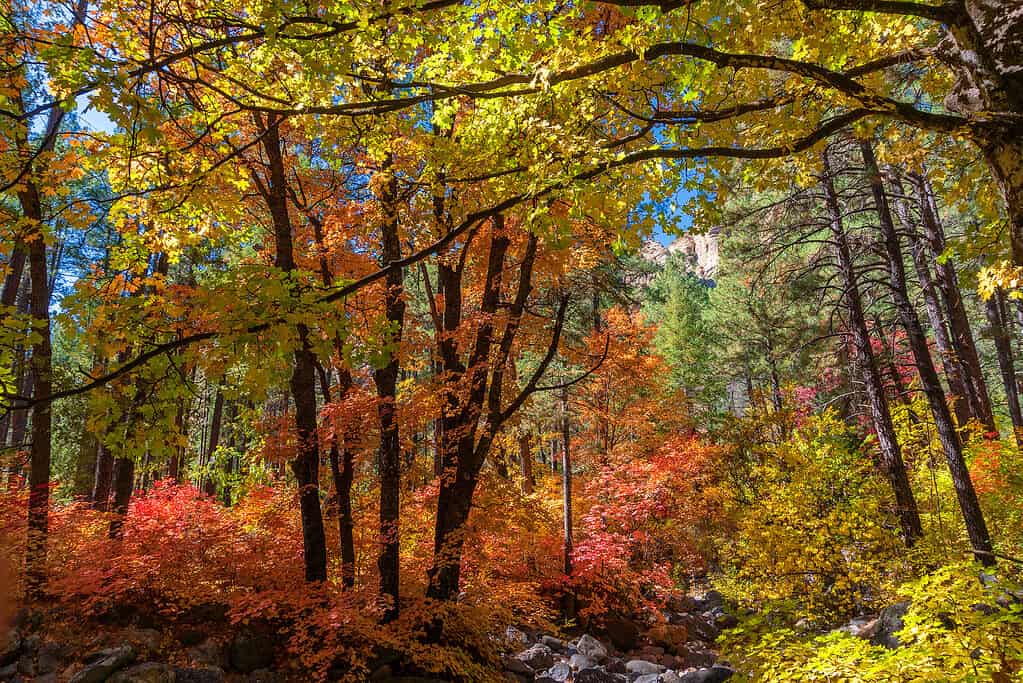
©iStock.com/mdesigner125
7. Netleaf Hackberry (Celtis reticulata)
Netleaf hackberry is a deciduous tree native to New Mexico and other parts of the western United States. It typically grows between 20-30 feet in height and has a rounded crown with somewhat drooping branches. The bark on this species is grayish-brown, smooth when young, but rougher with vertical corky ridges as it matures. Its leaves are ovate with netlike veins that give them their name; they range from one to three inches long, turning yellow or purplish red before falling off in autumn.
This species produces small white flowers during mid-spring, which later develop into black berries, providing food for wildlife, including birds, squirrels, chipmunks, and even deer! Netleaf hackberry grows in rocky sites above the water line throughout its range and makes an excellent addition to any landscape due to its attractive foliage and form.
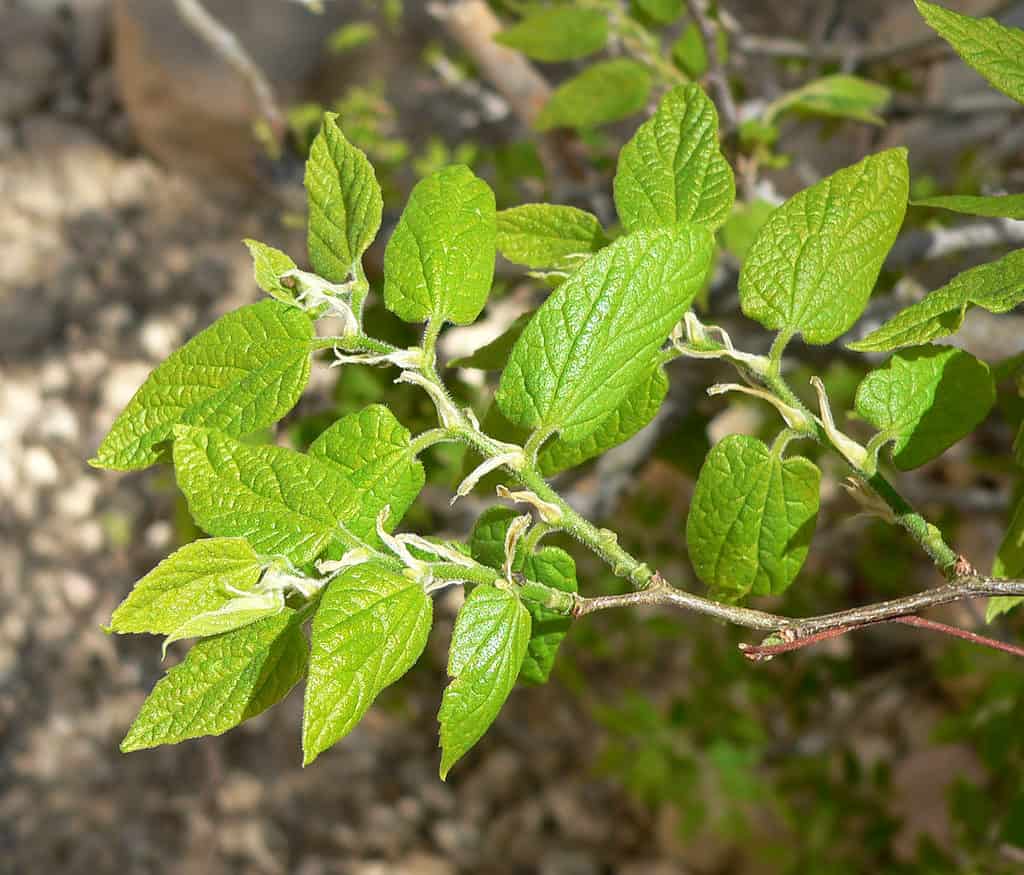
©Stan Shebs, CC BY-SA 3.0
8. Desert Willow (Chilopsis linearis)
Desert willow is a native tree of New Mexico and can be found in its desert plains. It is deciduous, meaning it will lose its leaves during winter. The desert willow has long branches spread out wide with an umbrella-like canopy, giving it its name. It produces beautiful fragrant flowers ranging from pink to purple, which bloom throughout the summer season and attract pollinators such as bees, butterflies, and hummingbirds.
Its fruit is winged capsules containing many small seeds, which are dispersed by birds who feed on them. The desert willow prefers sunny, dry areas but tolerates some shade and moist soils, making it a great addition to any garden or landscape design!
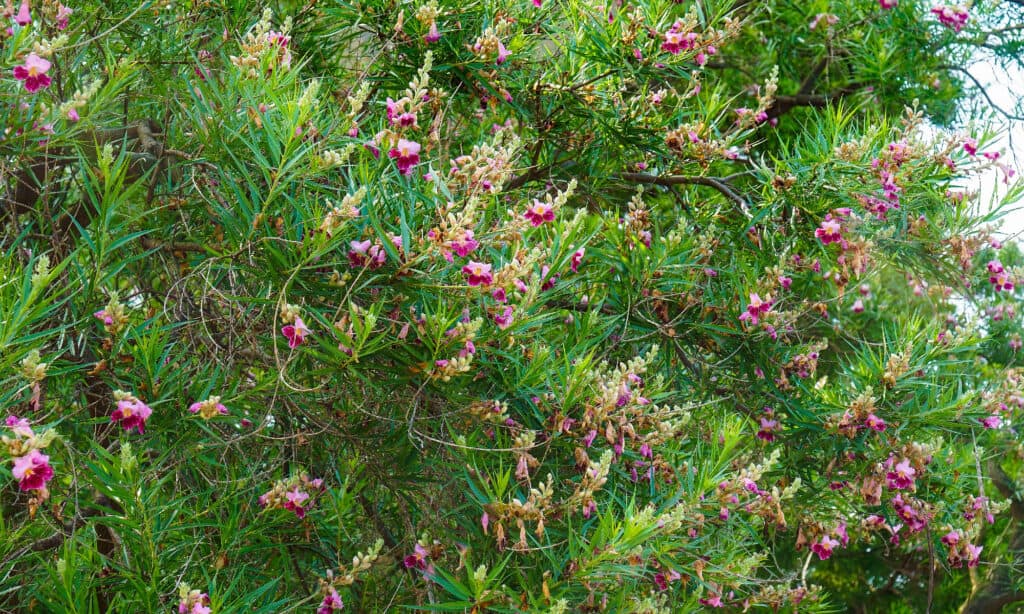
©Nikolay Kurzenko/Shutterstock.com
9. New Mexico Olive (Forestiera pubescens)
The New Mexico olive is a multi-stemmed perennial shrub or small tree native to the state of New Mexico. It has an upright, spreading habit and can reach heights of up to 15 feet under ideal conditions. The bark is smooth and light gray. Its flowers are small and greenish-yellow, growing in dense clusters at the ends of branches during springtime. The fruit is an olive-like berry that ripens from green to dark purple by autumn.
This tree does well in areas with full sun exposure and moderate moisture levels throughout most of its growing season; however, it can tolerate periods of drought when established. With its hardiness and attractive foliage, this tree makes for a great choice for adding visual interest to any landscape or garden!
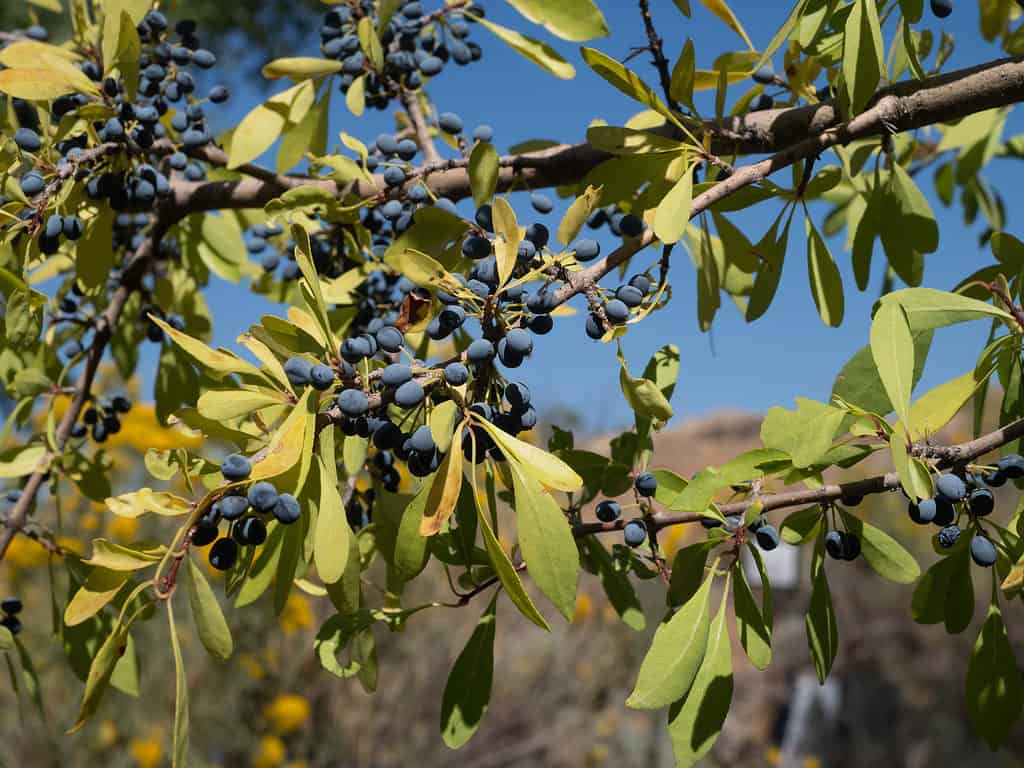
©iStock.com/Teresa Otto
10. One-seed Juniper (Juniperus monosperma)
The one-seed juniper is a type of coniferous shrub or small tree native to the southwestern United States, including New Mexico. It grows in desert regions and has a wide range of elevations it can thrive, from 3,100 feet up to 7,500 feet above sea level. It has a dense, round crown and gray-brown bark that exfoliates in thin strips. The bark underneath is a bright orange-brown.
The one-seed juniper produces small blueberry-like cones, which give it its name – each berry contains only one seed! It's an important food source for birds, such as quail, and is also eaten by chipmunks, foxes, rock squirrels, deer, and goats. Besides its use as a food source, this evergreen tree also provides aesthetic beauty for parks or yards throughout the region due to its attractive shape and characteristic needles.
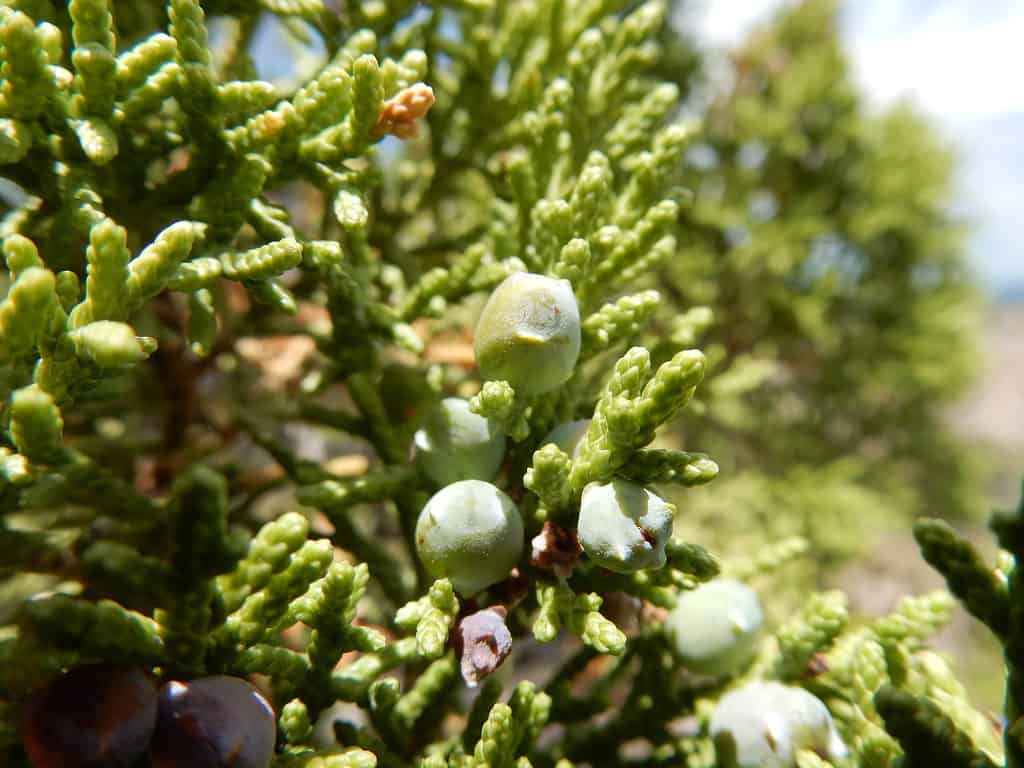
©Matt Lavin from Bozeman, Montana, USA, CC BY-SA 2.0
11. Screwbean Mesquite (Prosopis pubescens)
Screwbean mesquite is a small, drought-tolerant tree native to New Mexico. It grows up to 20 feet in height with an upright form and can be found in valleys and along streams. In springtime, screwbean mesquite produces yellowish flowers followed by long twisted seedpods that hang downward.
This tree has many uses – its wood is durable enough for building construction, while its nitrogen-fixing roots help enrich soil quality. Screwbean mesquite has an edible nutritious seedpod and can even be made into a coffee substitute.
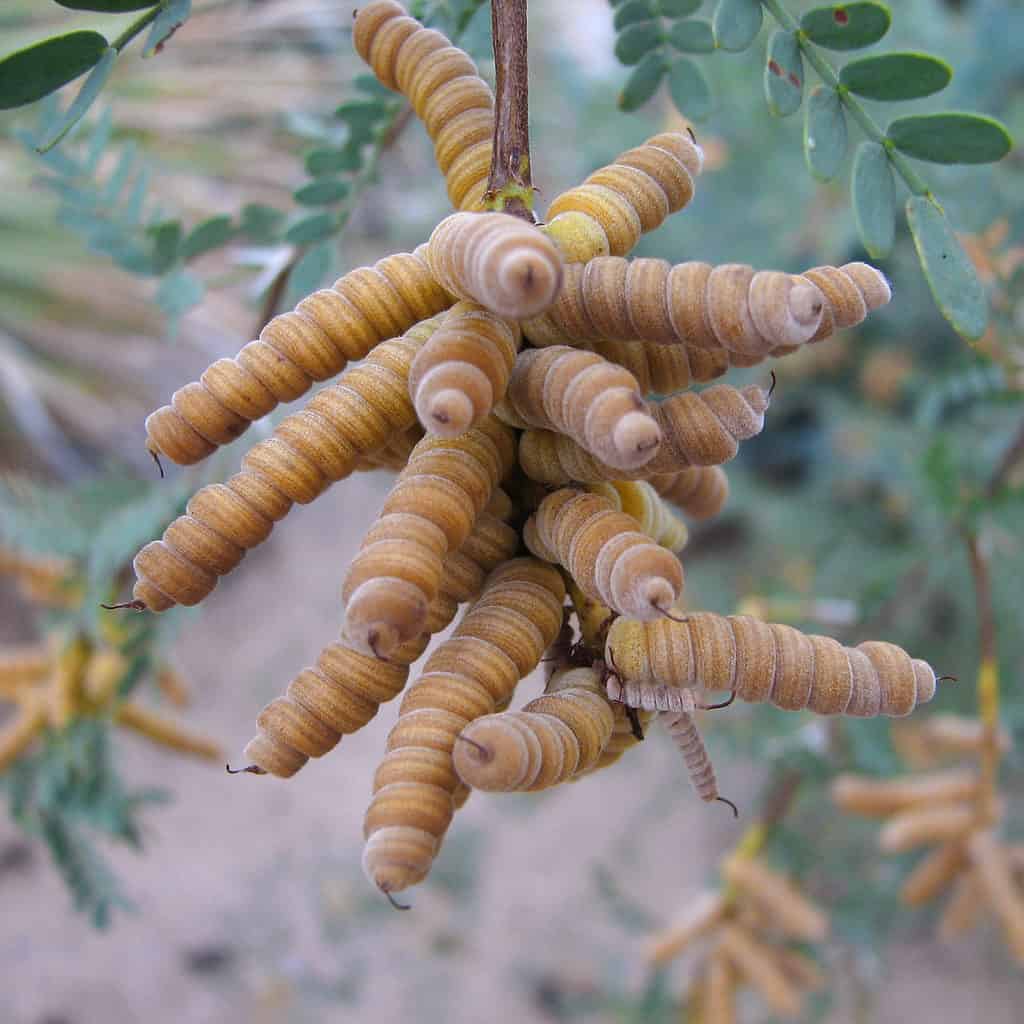
©Katja Schulz / Flickr – License
12. New Mexico Locust (Robinia neomexicana)
The New Mexico locust is a deciduous tree native to the Southwestern United States, including New Mexico. It grows up to 15-30 feet tall with light gray bark. In the spring, it produces fragrant pink blossoms, which turn into brown seed pods in mid-summer.
Because it has deep root systems, this tree can help prevent soil erosion on slopes or along stream banks where water flow can be intense during heavy rains. This species also provides food and shelter for wildlife. Mule deer, cattle, and goats love to eat its foliage, and squirrels and quail eat seeds.
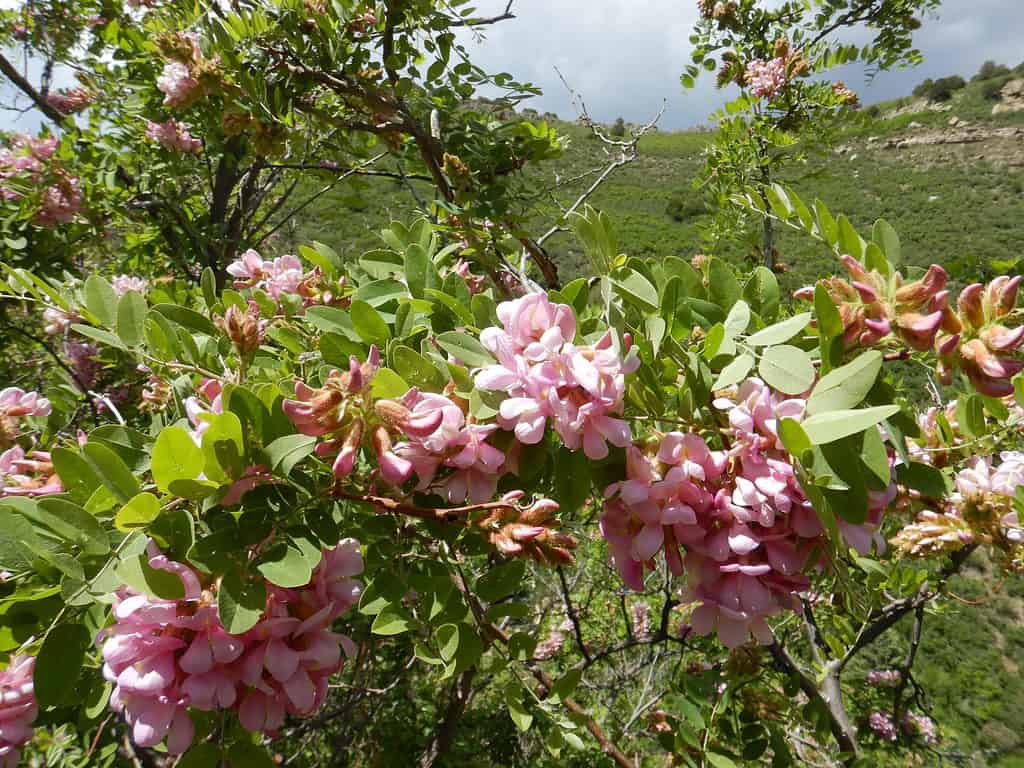
©Matt Lavin from Bozeman, Montana, USA, CC BY-SA 2.0
Here is a Summary of the 12 Trees Native to New Mexico
- Engelman Spruce
- Gamble Oak
- Pinyon Pine
- Ponderosa Pine
- Rocky Mountain Juniper
- Bigtooth Maple
- Netleaf Hackberry
- Desert Willow
- New Mexico Olive
- One-seed Juniper
- Screwbean Mesquite
- New Mexico Locust
Comments
Post a Comment